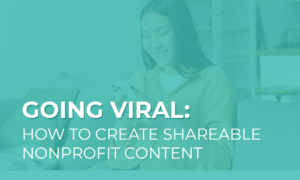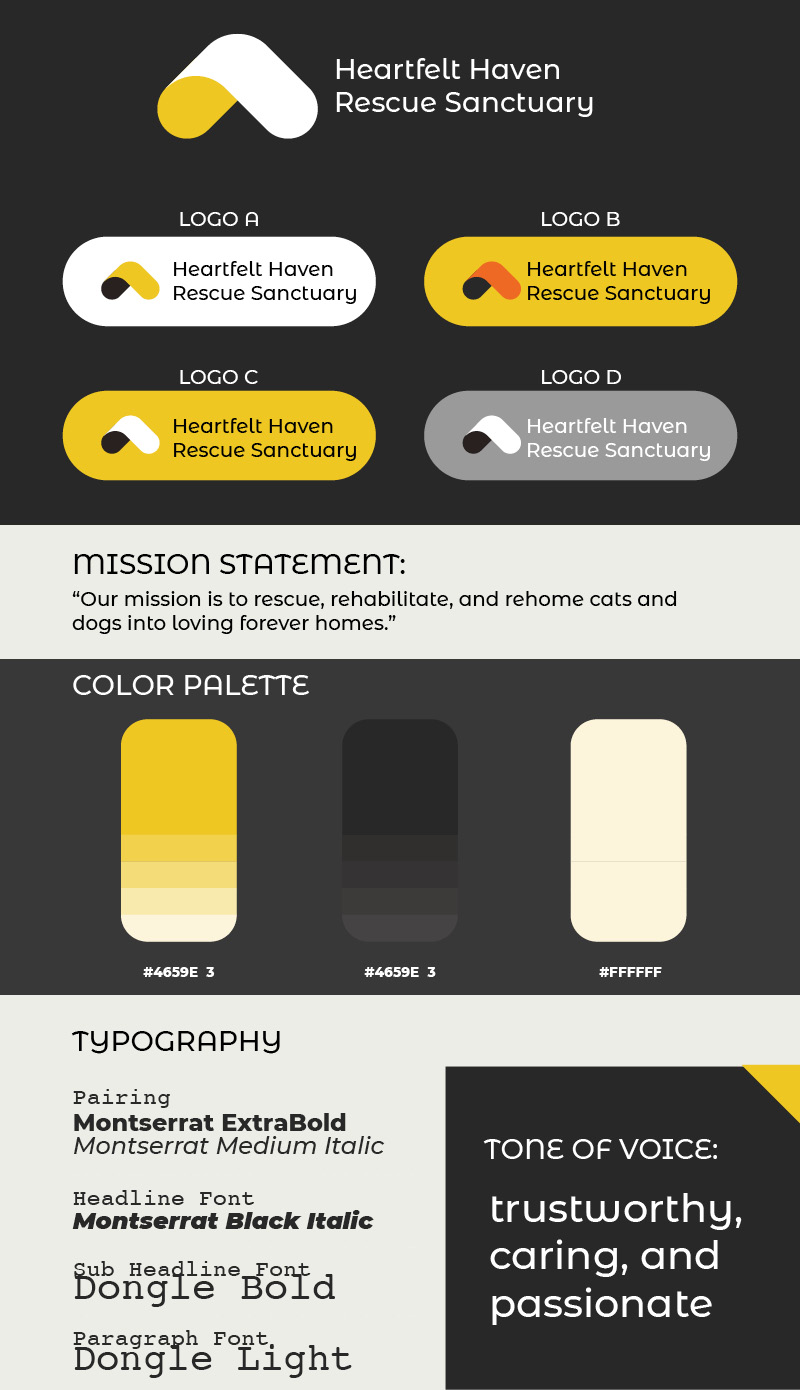 While social media started as a means to check in with family and friends, it’s evolved into a free tool for organizations to spread their messages and reach supporters near and far. Every nonprofit marketer’s dream is to go viral on social media and achieve maximum visibility for their cause, but with billions of users claiming space on the platforms, it’s easier said than done.
While social media started as a means to check in with family and friends, it’s evolved into a free tool for organizations to spread their messages and reach supporters near and far. Every nonprofit marketer’s dream is to go viral on social media and achieve maximum visibility for their cause, but with billions of users claiming space on the platforms, it’s easier said than done.
However, by crafting a content strategy built for virality, your organization can gain more exposure. These tips can help you amplify your mission on social media:
- Leverage each platform’s unique features.
- Stay on top of trends and challenges.
- Create visually appealing multimedia content.
- Collaborate with an influencer.
While we explore the ins and outs of social media for nonprofits, remember that super-virality isn’t everything. Even if you don’t become a social media sensation overnight, you can still engage new audiences who resonate with your cause and join your community. Let’s dive in!
1. Leverage each platform’s unique features.
Much like how email and search ads have distinct advantages and drawbacks, social media platforms are all unique and offer different opportunities to nonprofit marketers. Therefore, choosing your platform effectively is crucial from the start of your planning process. Follow these steps to pinpoint the best platforms for your needs:
- Learn about the platforms available.
You likely already know about social media giants like Facebook, Twitter, YouTube, and Instagram. You can dive even deeper into more niche platforms, such as LinkedIn or local community forums, to get a full picture of the options available to you. - Ask your target audience about their preferences.
If you already know your goals for social media marketing and have a target audience nailed down, send out a survey or post a question asking them which platforms they use and why. This helps you efficiently allocate resources so you can focus on platforms that your target audience frequently uses. - Understand each platform’s features.
Once you have a list of contending social media sites, research their strengths, weaknesses, and content focuses. For instance, if you want to make long-form video content, YouTube would be a good choice, whereas Twitter is useful for text-based content. - Look into paid advertising opportunities.
Every major social media site offers paid ad spots. While this won’t be as useful for creating viral content, it can still help you spread awareness of your account itself and boost your network of followers. Also, look out for any nonprofit advertising discounts while you research.
Selecting your focus platforms now helps you create content that’s more likely to go viral based on each site’s unique characteristics. Once you have your social media sites prioritized, it’s time to start creating content!
2. Stay on top of trends and challenges.
Social media’s highly shareable ecosystem allows posting trends and challenges to achieve widespread popularity. For example, you might remember 2014’s ALS Ice Bucket Challenge, which yielded a whopping 17 million participants around the world. You can capitalize on the visibility that trends provide to grow your audience and secure long-term supporters.
Use these tips to make the most of social media trends and challenges:
- Only participate in appropriate, relevant trends. Ensure the trend or challenge you’re participating in is on-brand. Even if it’s a silly challenge, always maintain professionalism to win the trust of potential donors.
- Leverage hashtags. Most trends gain popularity with a shared hashtag that participants add to their posts. Remember to include the hashtag and any other identifiers, such as a TikTok sound, on your post so you can reach the trend’s audience.
- Add your own spin to the challenge. While social media trends’ popularity means a large potential audience for your post, it also means you have lots of competition for attention. Incorporating your own unique twist in your post helps you stand out from the crowd.
The downside to trends and challenges is that they’re usually short-lived. Ensure you check the trending tab regularly so you never miss a relevant trend or challenge in its prime. Furthermore, don’t spend too much time drafting or producing your post so it hits the web during the trend’s peak popularity.
3. Create visually appealing multimedia elements.
Standing out on your timeline and achieving viral engagement numbers is easier said than done. However, with the right visual look and resonant content, you can make a big impact with your social media posts.
Whether you decide to create videos, infographics, or any other type of content, keep these essentials in mind while making your multimedia elements:
- Focus on your beneficiaries or supporters. Tell a story with your content that features the people that matter most—members of your community. Usually, that means focusing on your beneficiaries, but you might also use social media to highlight standout supporters to inspire viewers to join. Focusing your content on real people gives your content emotional nuance and boosts the likelihood of sharing.
- Create content tailored to the platform. It’s tempting to post every piece of content to all of your social media channels, but be careful to post content that aligns with the platform’s focus. For example, you might create a shortened clip of a long-form YouTube video to post on TikTok, as short-form videos perform better there.
- Use consistent branding. Cohesive brand elements help establish your nonprofit’s identity to new audiences that encounter you online. To keep your brand consistent across all content and platforms, create a brand guide like this example from Fifty & Fifty’s guide to nonprofit branding:

Using your creativity to post the most empowering, emotional, and shareable content is what will ultimately help your content gain traction and even go viral.
4. Collaborate with an influencer.
You might already work with professionals for other nonprofit activities, so why not work with a professional content creator? Influencers have the reach and expertise to help your content reach a new level of visibility. However, you should keep these tips in mind before branching out into influencer marketing:
- Know your target influencer size. Though mega-influencers have the largest platform, they’re likely very hard to reach if you don’t have an existing connection with them. However, micro-influencers (influencers with 10,000-50,000 followers) are much more likely to see your message and partner with you. Plus, micro-influencers have small but loyal follower bases, meaning your content will find an engaged audience.
- Offer competitive rewards. Depending on the perceived value of your partnership with the influencer, you could pay them outright for their partnership or offer sponsorship opportunities for free. Whichever you choose, ensure that it’s within your budget.
- Provide creative freedom. Your influencer partner gained a following due to their unique content-creation techniques, so you should leverage their expertise to emulate their success. Treat them as a true creative partner so your content feels authentic.
Remember to background check influencer partners thoroughly to ensure that they align with your brand before extending an offer. Unknowingly partnering with an influencer who doesn’t represent your nonprofit’s values could result in misrepresentation or a loss of donor trust.
Wrapping Up
As you begin your digital marketing journey on social media, remember that it might take some time for your posts to gain traction. That said, as long as you prioritize production quality and keep the focus on your beneficiaries, you’re sure to reach the right audience and cultivate a community online.
